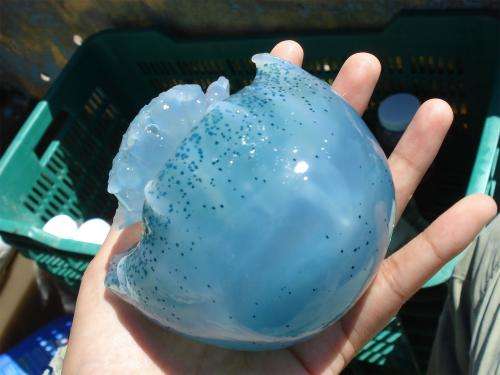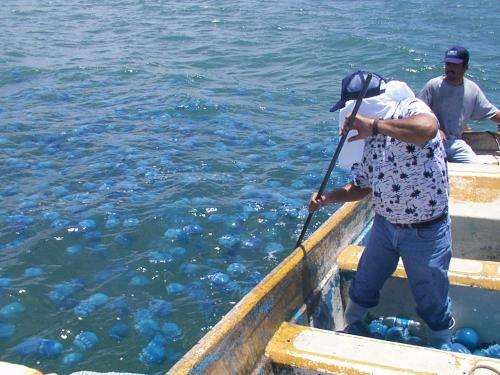Environmental threat turned sustainable business for the Gulf of California

Considered a threat to the biodiversity of marine ecosystems of the Gulf of California, the cannonball jellyfish Stomolophus meleagris is intended to be exploited commercially throughout the Mexican Pacific coast where it occurs, thanks to fishing potential discovered by producers of Sonora and researchers at the Biological Research Center of the Northeast (CIBNOR).
Also called ball jellyfish, occurs between Kino Bay and Agiabampo Estuary, in Sonora state on northwest Mexico. Its reproduction has been favored by an increase in temperature and currently is catalogued as an invasive species that can affect the ecosystem food chain, according to research at CIBNOR.
The study led by Juana López Martínez notes that these negative effects can be countered because the jellyfish has the advantage of being edible. In Mexico, where is just beginning to be exploited commercially, represents a real alternative to fishermen because of its high value in the Asian market.
In entities where is harvested for food is valued for possessing medicinal properties and is traditionally used to treat diseases such as arthritis and hypertension, in addition to being considered a "delicatessen" by Asian countries, where the jellyfish is one of the dishes that are consumed in parties of "long tablecloths. "
López Martínez pointed that the fishing activities in the Gulf of California are currently focused on few species, mainly shrimp, sardines and squid; however, catches of these fisheries no longer undergo substantial increase.
For that reason, it is important to promote the exploitation of species with potential for opening commercial fishing and even reach the international market, as the cannonball jellyfish in the Gulf of California.

However, their use should be in a sustainable way given that the cannon ball jellyfish (also known as aguamala) plays an important role in the upbringing and shelter of juvenile fish. Besides, it serves as food to some commercial species such as the turtle and moon fish, and is a source of nutrients to the sea bed, mainly to biodiversity rich areas as coastal lagoons fronts.
In Mexico, the states where this species is captured are Tabasco and Oaxaca in the southeast of the country. And Sinaloa and Sonora (on the northwest), but only in Sonora is fished commercially, while in the rest of the states is captured in foment fishing mode, ie for research, exploration, experimentation, conservation and marine resource assessment purposes.
This species lives in California waters and has a hemisphere-shaped cover called bell, under which there is a rugged trunk with a central hole known as pinion. The whole jellyfish is exploited and marketed to countries like China and Japan.
Among the findings of the research currently underway and funded by the National Council of Science and Technology (CONACYT), it has been shown that commercial fishing can be a control measure to prevent the jellyfish population to expand and generate an impact in the ecosystem on the Pacific coast, representing an alternative on the diversification of fishing activities.
Provided by Investigacion y Desarrollo




















